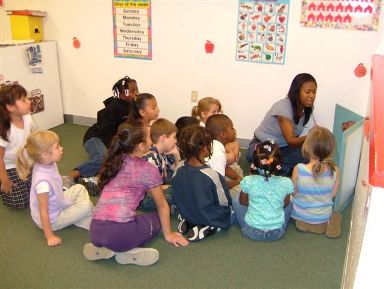
Language unlocks the world for our children and allows them the ability to communicate their wants, needs, and emotions in ways which help us understand the people they are becoming. While verbal communication skills are the hallmark of the toddler years, they are quickly followed up by the desire to learn to read and understand the written word in the world around us. From street signs to magazines, texts, and library books, children want to know “What does that say, daddy?” at every turn. There will be times during these early years when you feel exhausted at responding to that question, but the way in which you encourage your child’s love of learning (and in particular, reading) can shape his or her academic and social success for years to come.
Children who are read aloud to from an early age benefit from having a more extensive vocabulary upon entry to preschool than do others, and those who are given rich and detailed understanding of sophisticated vocabulary continue to demonstrate a curiosity about the world beyond the pages of a storybook (Collins, 2012). Reading aloud to children, both in school and in the home, primes their understanding of the value of words and the connections between what they see in print and what happens in their environments. Most daycare and preschool settings include some time for read-alouds and other forms of literacy support designed to expose children to early, simple to grasp vocabulary (called “decodable” words) as a foundation for Kindergarten learning and beyond. Some schools practice whole language learning and some phonics as a basis for learning, but the outcomes are usually stated as the same: introduce children to the alphabet and early words they can use as building blocks for future learning.
Some of the most important advances in communication skills come from being able to identify the objects in the space around us. For children, reading and being read to can help them give names and labels to everyday items we adults take for granted. Preschoolers who participate in read-alouds at home and at school, for instance, recognize more nouns than do those not exposed to reading and are able to build upon the nouns to quickly learn words describing their appearance and activities (McLeod & McDade, 2011).
Given that reading is an important part of a child’s development, how can parents support the learning happening at school and create an environment which encourages reading outside of school? Creating one’s own library can be an expensive and daunting task, but with a few small adjustments and a relatively small amount of expenditure, parents can create a space useful for reading to and with their children as well as for their children to begin exploring reading on their own (Bernadowski, 2009).
• Provide access to books. As adults, especially those with a love of reading, we tend to place books out of the reach of small hands which may dirty the pages. Design a space specific to your child and place books in the space that are easy to clean and difficult to damage. Make certain your child knows books are for reading and enjoying, not simply for placing on a shelf to be revered.
• Create a reading routine. Whether it happens at bedtime, after meal-time, or at a time set aside when mom and dad come home from work, set aside predetermined time to read with and to your child every day. Make this time sacred and don’t let life get in the way; understand it will become an important bonding opportunity for you and a way for your child to see you as a teacher and imparter of knowledge.
• Reading material for your child should be varied and represent his or her interests. Don’t assume The Cat in the Hat is what every child wants to read (or hear); understand that all books have value and finding something that grabs and keeps your child’s attention is more important than reading books high on “10 most important books your child should read before Kindergarten” list.
• Take your time. As with everything, time investing in reading will produce better results than rushed experiences. Allow your child to stop and ask questions frequently, clarifying his or her understanding of the story or of specific words used by the author. Take time to discuss illustrations and how they tie to the story as a means of making the words come alive.
• Allow your child to read. Always allow your child to read alongside you if he or she chooses. While they may not have the ability to read from the start, letting them read over your shoulder or use their own fingers to point out words they recognize will build confidence in sounding out words down the road when they become more difficult. Even when your child gets a word wrong, use encouraging language to help them move toward the right word and you’ll see their vocabularies grow with leaps and bounds.
Resources for young readers:
Reading Rockets
http://www.readingrockets.org/
PBS: A List of invaluable resources for developing readers
http://www.pbs.org/launchingreaders/resources.html
Tips on reading to toddlers
http://kidshealth.org/parent/growth/learning/reading_toddler.html
References
Bernadowski, C. (2009). Teacching literacy skills to preschoolers without spending a bundle. Reading Today, 26(3), 40.
Collins, M. F. (2012). Sagacious, sophisticated, and sedulous: The importance of discussing 50-cent words with preschoolers. Young Children, 67(5), 66.
McLeod, A. N., & McDade, H. L. (2011). Preschoolers’ incidental learning of novel words during storybook reading. Communication Disorders Quarterly, 32(4), 256-266.
